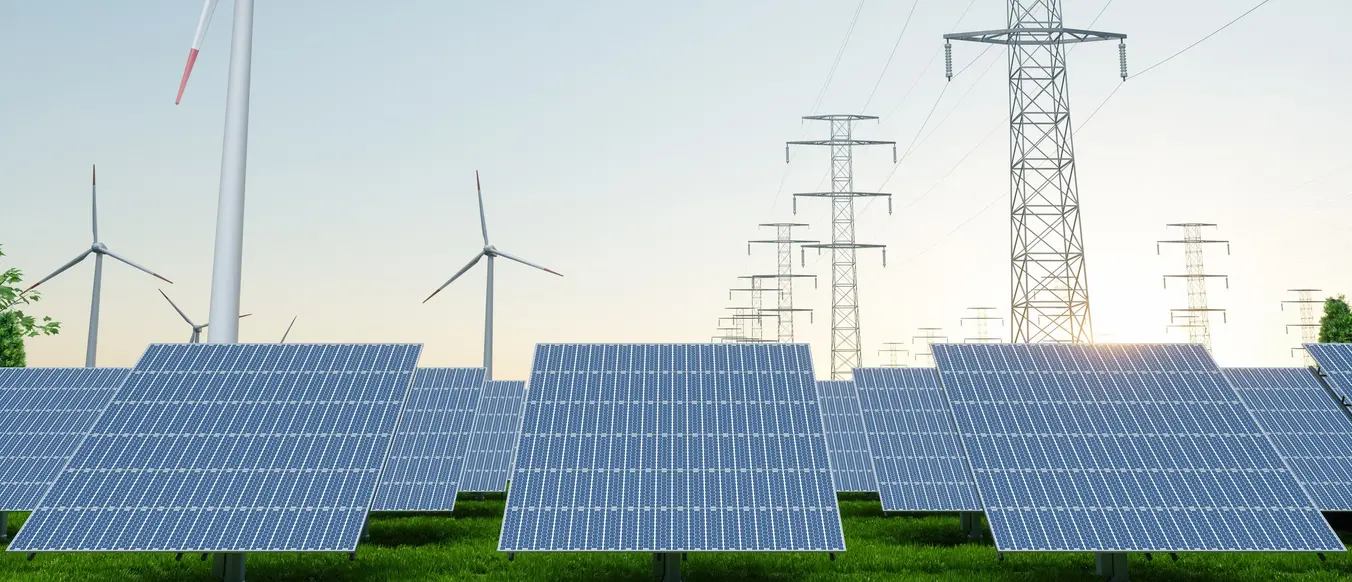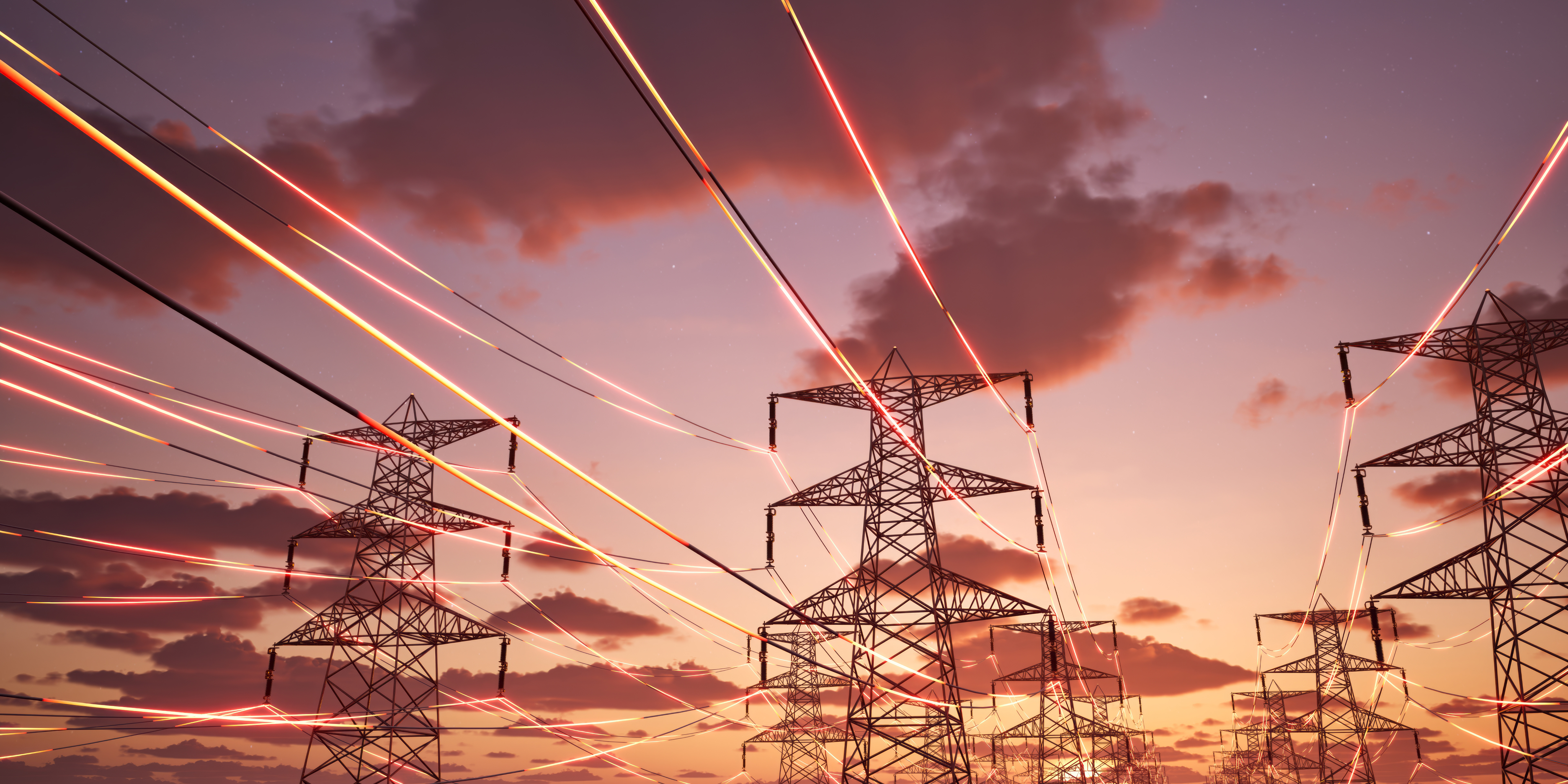Understanding the US energy mix: An introduction for small and medium-sized business owners

Navigating the complexities of the US energy market can be daunting for small business owners. However, a clear grasp of the nation's energy mix and the balance between renewable and non-renewable sources can empower you to make informed decisions, manage costs effectively, and align your business with sustainability goals.
This World Kinect guide delves into the US energy mix, the origins of our energy, the distinctions between renewable and non-renewable sources, and the current proportions of each in our energy supply.
What is the energy mix?
The term "energy mix" refers to the combination of various energy sources used to meet a region's or country's energy needs. In the United States, this mix includes both renewable sources – such as solar, wind, hydroelectric, and biomass – and non-renewable sources like coal, natural gas, petroleum, and nuclear energy.
The composition of this mix is influenced by factors such as resource availability, technological advancements, economic considerations, and policy decisions. Understanding the energy mix is crucial for businesses aiming to optimize energy consumption, reduce costs, and contribute to environmental sustainability.
Where does most energy in the US come from?
Recent research shows the US energy consumption is predominantly sourced from non-renewable resources. According to the US Energy Information Administration (EIA), in 2022, petroleum accounted for approximately 36% of the total energy consumption, primarily used in transportation and industrial sectors. Natural gas followed closely, contributing about 32%, serving as a key fuel for electricity generation and heating.
Coal, once the dominant energy source, has seen a decline but still represented around 11% of the energy consumption, mainly in electricity generation. Nuclear energy provided about 8%, offering a significant portion of carbon-free electricity. Renewable energy sources collectively contributed approximately 13% to the total energy consumption, with notable growth in wind and solar power.
Renewable and non-renewable energy in the US
Non-renewable energy sources:
Non-renewable energy sources are those that do not replenish on a human timescale. In the US, the primary non-renewable sources include:
- Petroleum: Used extensively in transportation, manufacturing, and as a raw material in various industries.
- Natural gas: Utilized for electricity generation, heating, and as an industrial feedstock.
- Coal: Historically significant for electricity generation, its usage has declined due to environmental concerns and competition from cleaner energy sources.
- Nuclear energy: Provides a substantial share of the nation's electricity through nuclear fission processes in reactors.
Renewable energy sources:
Renewable energy sources naturally replenish and are considered more sustainable. In the US, key renewable sources include:
- Wind energy: Harnesses wind currents to generate electricity through turbines.
- Solar energy: Captures sunlight using photovoltaic cells or concentrated solar power systems to produce electricity or heat.
- Hydroelectric power: Generates electricity by utilizing the flow of water to drive turbines.
- Biomass: Involves using organic materials like wood, agricultural residues, and waste to produce heat, electricity, or biofuels.
Proportion of renewable vs. non-renewable energy sources in the US energy supply
The US has been witnessing a gradual shift towards renewable energy, driven by technological advancements, policy incentives, and increasing environmental awareness. According to recent data from 2022, the energy consumption distribution was 87% from non-renewable sources and only 13% from renewable sources.
Within the renewable category, wind and solar energy have experienced significant growth. Notably, in 2024, for the first time, wind and solar power combined surpassed coal in electricity generation, accounting for 17% of the energy mix compared to coal's 15%.
Implications for small and medium-sized business owners
Understanding the energy mix and the balance between renewable and non-renewable sources has direct implications for small business owners:
- Cost management: Energy prices are influenced by the availability and cost of different energy sources. For instance, fluctuations in natural gas prices can impact electricity rates. By staying informed about these trends, businesses can anticipate changes in energy costs and adjust their operations accordingly.
- Sustainability goals: Aligning with renewable energy sources can enhance a company's reputation and meet the growing consumer demand for environmentally responsible practices. Investing in renewable energy or purchasing renewable energy credits can be a step towards sustainability.
- Regulatory compliance: Governments are implementing stricter regulations to reduce carbon emissions. Understanding the energy mix can help businesses anticipate and comply with these regulations, avoiding potential penalties.
- Energy independence: Utilizing renewable energy sources, such as installing solar panels, can reduce dependence on external energy providers, offering more control over energy costs and reliability.
How World Kinect can assist
Navigating the energy market requires expertise and strategic planning. World Kinect specializes in guiding businesses through these complexities, offering services such as:
- Energy procurement: Assisting in selecting the most cost-effective and sustainable energy sources tailored to your business needs.
- Risk management: Providing strategies to mitigate risks associated with energy price volatility.
- Sustainability consulting: Helping businesses transition to greener energy sources and meet sustainability targets without compromising cost-efficiency.
Take control of your energy strategy today
A good understanding of the US energy mix is key to making informed decisions that benefit your bottom line. Whether you're looking to cut costs, improve sustainability, or simply navigate the complexities of the energy landscape, World Kinect is here to help.
Our team of energy experts can assess your current energy strategy, compare supplier rates, and guide you toward the best energy solutions for your business.
Get in touch today at (888)-566-3362 or request a call below to see how World Kinect can help your business secure a better energy deal.



